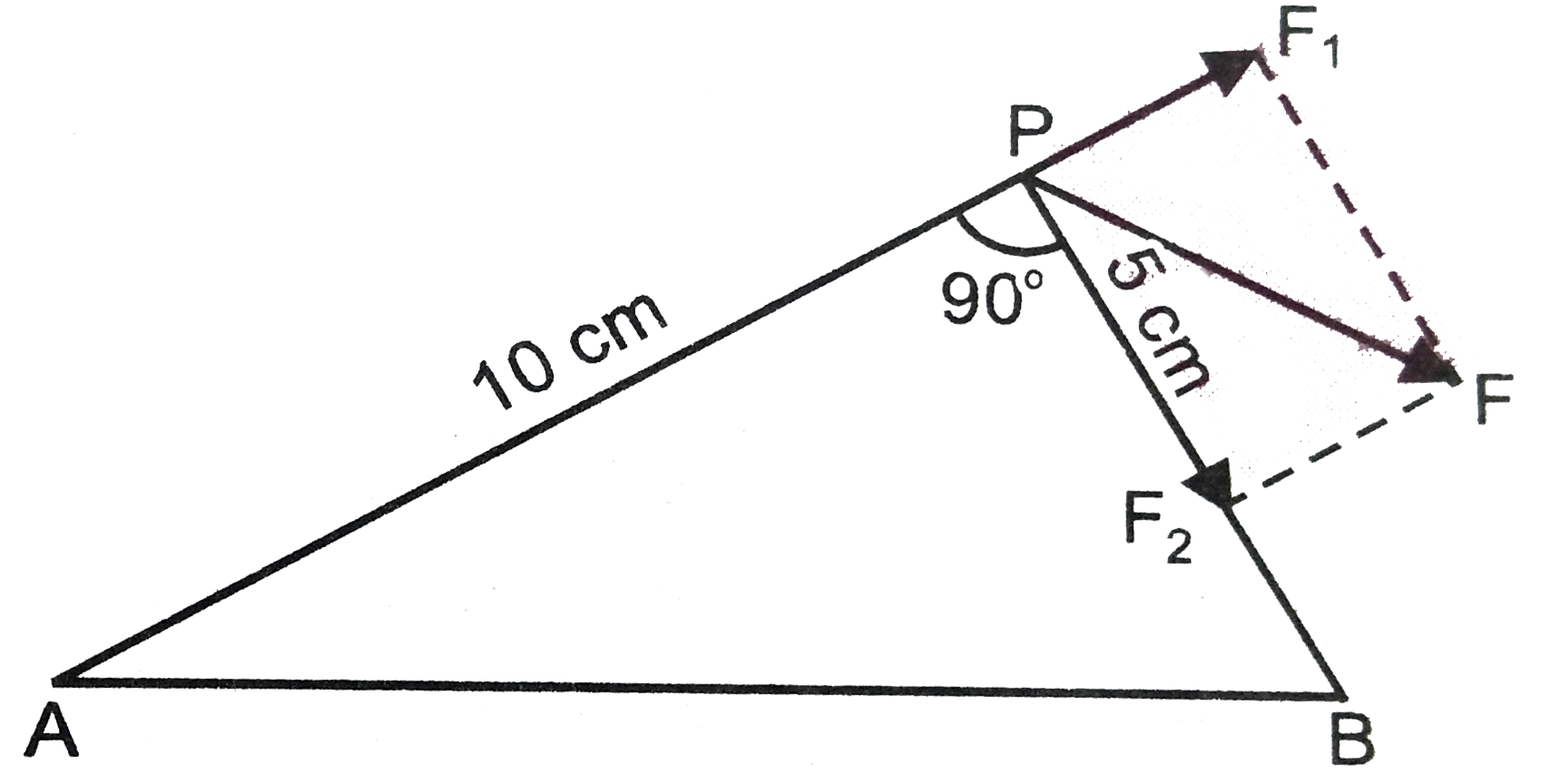Find the magnitude of the resultant force on a charge of 1μC held at P due to two charges of +2×10−8Cand−10−8C at A and B , respectively.
Take , AP = 10 cm and BP = 5 cm and ∠APB=90∘
(##ARH_CC_CHSE_ODI_PHY_XII_C01_E01_010_Q01.png" width="80%">
Here, charge at P , q= 1μC=10−6C
Charge at A,q1=2×10−8C
Charge at B,q2=−10−8C
AP = 10 cm = 0.1 m , BP = 5 cm = 0.05 m,
∠APB=90∘,F=?
Force at P due to q1 charge at A
F1=14π∈0q1qAP2 along AP produced
=9×109×2×10−8×10−6(0.1)2=18×10−3N
Force at P due to q2 charge at B,
F2=14π∈0q2qBP2 along PB produced
9×109×−10−8×10−6(0.5)2=−36×10−3N
As angle between F1andF2 is 90∘
Resultant force
F=√F21+F22=√(18×10−3)2+(−36×10−3)2
=√(324+1296)×10−6=√1620×10−6
=40.2×10−3
=4.0×10−2N
Similar Questions
Find the magnitude of the resultant force on a charge of 1μC held at P due to two charges of +2×10−8C at A and B respectively.
Given AP = 10 cm and BP = 5 cm.
∠APB=90∘, Fig.
 View Solution
View SolutionTwo point charges q1andq2 of magnitude +10−8Cand−10−8C respectively are placed 0.1 m apart . Calculate the electric field at point B ,C and A
(##U_LIK_SP_PHY_XII_C01_E10_021_Q01.png" width="80%">View Solution
Knowledge Check
- Question 1 - Select One
In the figure shown
(##AHT_PGT_PHY_C10_E01_006_Q01.png" width="80%">AP>P0BP<P0CP=P0DP=0 - Question 2 - Select One
The IUPAC name of (##GRB_ORG_CHM_P1_C03_E03_046_Q01.png" width="80%">
A4-ethyl cyclobut-2-en-1-olB4-ethyl cyclobut-1-en-3-olC3-ethyl cyclobut-1-en-2-olD2-ethyl cyclobut-3-en-1- ol - Question 3 - Select One
In figure , if AB = 12 cm , BC = 8 cm and AC = 10 cm , then AD is
(##CEN_JEE_MAT_X_C14_E01_035_Q01.png" width="80%">A5 cmB4 cmC6 cmD7 cm
Find the equivalent resistance between P and Q.
(##ARH_NEET_PHY_OBJ_V02_C03_S01_032_Q01.png" width="80%">View SolutionThe given image represents:
(##OSW_GRU_MCQ_ISC_XII_SM1_BIO_C05_E01_070_Q01.png" width="80%">View SolutionThe output across the load resistance R is
(##AAK_P7_NEET_PHY_SP7_C29_E04_031_Q01.png" width="80%">View SolutionThe p.m.f. of a random variable X is
(# TRG_MAT_MCQ_XII_P2_C08_E02_009_Q 01.png" width="80%">
If b= 2a, thenView SolutionThe relative stablility of the compounds:
(GRB_ORG_CHM_P1_C07_E01_260_Q01.png" width="80%">View Solution

